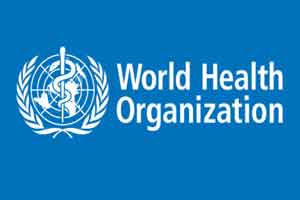- Home
- Editorial
- News
- Practice Guidelines
- Anesthesiology Guidelines
- Cancer Guidelines
- Cardiac Sciences Guidelines
- Critical Care Guidelines
- Dentistry Guidelines
- Dermatology Guidelines
- Diabetes and Endo Guidelines
- Diagnostics Guidelines
- ENT Guidelines
- Featured Practice Guidelines
- Gastroenterology Guidelines
- Geriatrics Guidelines
- Medicine Guidelines
- Nephrology Guidelines
- Neurosciences Guidelines
- Obs and Gynae Guidelines
- Ophthalmology Guidelines
- Orthopaedics Guidelines
- Paediatrics Guidelines
- Psychiatry Guidelines
- Pulmonology Guidelines
- Radiology Guidelines
- Surgery Guidelines
- Urology Guidelines
WHO issues guideline to reduce global C Sec rates

WHO has issued new guideline to help reduce worldwide increase in caesarean section rates.
The new guideline, WHO recommendations on non-clinical interventions to reduce unnecessary caesarean sections are first of its kind designed to reduce unnecessary caesarean sections.
Globally, caesarean section rates have been steadily increasing, without significant benefit to the health of women or their babies. In orde to address the sustained and unprecedented rise in these rates, WHO has published new guidance .
A caesarean section is a surgical procedure that, when undertaken for medical reasons, can save the life of a woman and her baby. Many caesarean sections are undertaken unnecessarily however, which can put the lives and well-being of women and their babies at risk – both in the short and the long-term.
Also Read: Globally Cesarean section doubled since 2000
The key recommendations include:
- Educational interventions for women and families to support meaningful dialogue with providers and informed decision-making on mode of delivery (i.e. providing childbirth training workshops for mothers and couples, relaxation training programmes led by nurses, psychosocial couple-based prevention programmes, psychoeducation for women with fear of pain or anxiety).
- Use of clinical guidelines, audits of caesarean sections, and timely feedback to health professionals about caesarean section practices.
- Requirement for second opinion for caesarean section indication at point of care in settings with adequate resources.
- Some interventions aimed at health organizations are recommended only under rigorous research such as collaborative midwifery-obstetrician model of care (i.e. a model of staffing based on care provided primarily by midwives, with 24-hour back-up from an obstetrician who provides in-house labour and delivery coverage without other competing clinical duties) or financial strategies (i.e. insurance reforms equalizing physician fees for vaginal births and caesarean sections).
“These guidelines are timely and needed. When we reduce unnecessary caesarean sections, we also reduce unnecessary risks to women and their babies. We also reduce unnecessary costs for hospitals and health systems.” said Dr. Ana Pilar Betran, medical officer at WHO Department of Reproductive Health and Research.
There is a wide disparity considering the fact that in low resource settings many women in need of caesarean sections still do not have access to caesarean section whereas many others undergo the procedure unnecessarily, for reasons which cannot be medically justified.
Other important features regarding Caesarean section are
- That caesarean birth is associated with short- and long-term risks that can extend to future pregnancies and affect the health of the woman, the child and.
- These risks are higher in women with limited access to comprehensive obstetric care.
- Caesarean sections are certainly costly, and high rates of unnecessary caesarean sections can therefore pull resources away from other essential health services, particularly in overloaded and weak health systems.
- The reasons for the increase of caesarean section rates are complex and vary widely between and within countries.
- Therefore an extensive research is required to identify and defines why rates are increasing in the particular setting, as well as what the locally relevant determinants of caesarean births are, as well as women and providers’ views and cultural norms.
- Therefore interventions to reduce rates that do not address the complex, multi-faceted reasons for the increase of rates, will be likely to have limited impact.
- Interventions that have multiple components are likely to be more successful and are therefore more desirable.
- The beliefs and attitudes of health-care providers, women, and societies need to be both respected and influenced.
Dr Betran comments, “It is crucial that women who need caesarean sections are able to access this potentially life-saving procedure, but equally unnecessary procedures should be avoided, so that the lives and well-being of women and their babies are not put at risk.”

Disclaimer: This site is primarily intended for healthcare professionals. Any content/information on this website does not replace the advice of medical and/or health professionals and should not be construed as medical/diagnostic advice/endorsement or prescription. Use of this site is subject to our terms of use, privacy policy, advertisement policy. © 2020 Minerva Medical Treatment Pvt Ltd